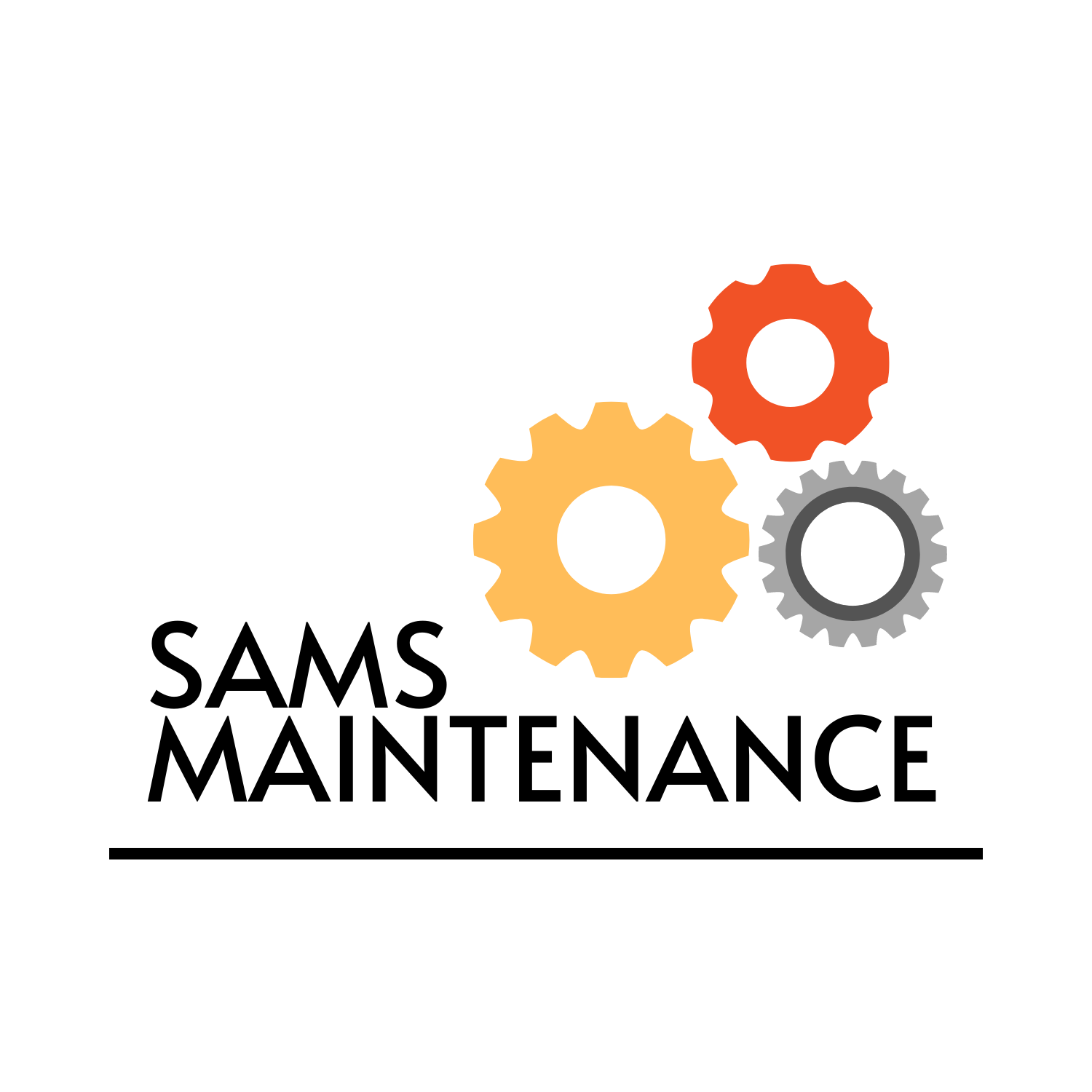As every business owner knows, maintaining a smooth operation is crucial for success. However, equipment breakdowns and tool malfunctions can quickly bring production to a halt, resulting in lost time and revenue. This is where preventative maintenance comes in – a proactive approach to ensuring that your equipment and tools remain in good working condition, reducing the risk of costly repairs and downtime. By understanding the importance of preventative maintenance and implementing a comprehensive plan, businesses in industries such as carpentry and electrical trades can stay ahead of the game and achieve optimal performance.

Implementing a Successful Preventative Maintenance Program
As a homeowner or business owner, implementing a preventative maintenance program can significantly reduce downtime, lower costs, and maximize productivity.
- Conduct Regular Equipment Inspections
- Create a Maintenance Schedule
- Invest in Quality Tools and Equipment
- Train Employees on Proper Maintenance Procedures
- Maintain Accurate Records
- Develop a Budget and Plan for Future Expenses
- Consider Outsourcing Maintenance Tasks
- Stay Up-to-Date with Industry Trends and Best Practices
Regular equipment inspections help identify potential issues before they become major problems. This includes checking oil levels, filters, belts, and hoses for wear and tear.
A well-planned maintenance schedule ensures that tasks are completed on time and helps prevent costly repairs down the road. Consider scheduling regular tune-ups, software updates, and hardware replacements.
Quality tools and equipment can extend the lifespan of your assets and improve overall performance. Invest in high-quality materials and consider outsourcing maintenance tasks to professionals when necessary.
Ensuring employees understand proper maintenance procedures is crucial for preventing accidents and reducing downtime. Provide ongoing training and education to keep staff up-to-date on the latest techniques and best practices.
Accurate records help track maintenance history, identify patterns, and inform future maintenance decisions. Consider investing in a maintenance management software to streamline record-keeping and reporting.
A well-planned budget and plan for future expenses help ensure that maintenance needs are met without breaking the bank. Consider setting aside funds for unexpected repairs and upgrades.
Oversight of maintenance tasks can be time-consuming and may require specialized expertise. Consider outsourcing certain tasks to professionals who have the knowledge and skills to complete them efficiently and effectively.
Staying informed about the latest industry trends and best practices helps ensure that your maintenance program remains effective and efficient. Attend conferences, workshops, and webinars to stay ahead of the curve.
By following these key steps, you can implement a successful preventative maintenance program that reduces downtime, lowers costs, and maximizes productivity.
At Sams Maintenance , we offer a range of services to support your maintenance needs, including equipment inspections, maintenance scheduling, and employee training.
For more information on how to get started with a preventative maintenance program, visit our website or contact us today.
Extending the Lifespan of Your Equipment and Tools
Regular preventative maintenance is crucial to extending the lifespan of your equipment and tools.
-
Conduct Regular Inspections
Perform routine inspections to identify potential issues before they become major problems.
- Check for signs of wear and tear, such as rust, corrosion, or worn-out parts.
- Look for loose connections, damaged cables, or faulty sensors.
- Verify that all safety features are functioning correctly.
-
Maintain Cleanliness and Organization
Keep your workspace clean and organized to prevent damage and reduce downtime.
- Clean equipment regularly to remove dirt, dust, and debris.
- Store equipment properly to prevent damage from moisture, extreme temperatures, or physical impact.
- Label and categorize equipment to facilitate easy identification and retrieval.
-
Schedule Regular Servicing
Follow the manufacturer’s recommended servicing schedule to ensure optimal performance and longevity.
- Replace worn-out parts or components according to the manufacturer’s guidelines.
- Update software or firmware to take advantage of the latest features and improvements.
- Perform routine calibration to maintain accuracy and precision.
-
Implement Proper Storage and Handling
Store equipment and tools properly to prevent damage and reduce the risk of accidents.
- Use protective covers or cases to shield equipment from environmental factors.
- Store equipment in a dry, well-ventilated area away from extreme temperatures.
- Handle equipment with care to prevent physical damage or electrical shock.
-
Monitor and Address Issues Promptly
Identify and address issues promptly to prevent minor problems from becoming major headaches.
- Respond quickly to alerts or notifications indicating potential issues.
- Investigate and diagnose problems thoroughly to determine the root cause.
- Take corrective action to resolve issues and prevent recurrence.
-
Document Maintenance History
Keep a record of maintenance activities to track progress and identify areas for improvement.
- Log maintenance activities, including dates, times, and details of work performed.
- Track equipment usage and performance to identify trends and patterns.
- Analyze maintenance history to inform future maintenance decisions.
-
Stay Up-to-Date with Manufacturer Recommendations
Stay informed about the latest recommendations and guidelines from manufacturers to ensure optimal performance and longevity.
- Subscribe to manufacturer newsletters or email updates.
- Visit manufacturer websites or social media channels for the latest news and announcements.
- Participate in online forums or communities to stay connected with other users and experts.
-
Consider Professional Maintenance Services
Consult with professionals to ensure complex or specialized equipment receives the attention it needs.
- Contact authorized service providers for routine maintenance or repair services.
- Seek advice from experienced technicians or engineers for complex or high-risk equipment.
- Partner with trusted vendors or suppliers for spare parts or replacement equipment.

Boost Productivity & Reduce Downtime: Effective Preventative Maintenance Strategies
Incorporating preventative maintenance strategies into your operations can significantly reduce downtime and increase productivity.
- Conduct Regular Equipment Inspections
- Check equipment regularly for signs of wear and tear
- Monitor temperature, pressure, and vibration levels
- Keep records of inspection findings and maintenance activities
- Maintain Accurate Records
- Keep detailed records of maintenance activities, including dates, times, and descriptions
- Store records securely and make them easily accessible
- Review records regularly to identify trends and areas for improvement
- Implement Predictive Maintenance
- Install sensors and monitoring systems to collect data on equipment performance
- Analyze data to identify patterns and predict potential failures
- Develop maintenance schedules based on predicted failure rates
- Train Staff on Maintenance Procedures
- Provide regular training sessions on maintenance procedures and best practices
- Encourage staff to ask questions and seek clarification when needed
- Recognize and reward staff for their contributions to maintenance efforts
- Foster a Culture of Maintenance
- Lead by example and demonstrate a commitment to maintenance
- Communicate the importance of maintenance to all stakeholders
- Establish clear goals and expectations for maintenance performance
Regular inspections can help identify potential issues before they become major problems, reducing the likelihood of unexpected downtime.
A well-maintained record-keeping system helps track maintenance history, ensures compliance with regulations, and informs future maintenance decisions.
Predictive maintenance uses data analytics and sensors to forecast equipment failures, allowing for proactive maintenance and minimizing downtime.
Ensuring staff have the necessary skills and knowledge to perform maintenance tasks effectively reduces errors and improves overall efficiency.
Cultivating a culture of maintenance within your organization promotes accountability, encourages proactive behavior, and drives continuous improvement.
By implementing these effective preventative maintenance strategies, businesses can reduce downtime, increase productivity, and drive long-term success.

Preventative Maintenance Tasks to Minimize Equipment Failures
To ensure optimal performance and minimize equipment failures, it’s crucial to prioritize regular preventative maintenance tasks.
- Scheduling Regular Inspections
- Maintaining Proper Lubrication
- Cleaning and Debris Removal
- Replacing Filters and Air Intakes
- Tightening Loose Connections
- Monitoring Temperature and Pressure
- Documenting Maintenance History
- Training Operators and Technicians
- Implementing Predictive Maintenance
- Conducting Energy Audits
Regular inspections can help identify potential issues before they become major problems, reducing the risk of unexpected downtime and costly repairs.
Lubricating moving parts regularly helps extend the lifespan of equipment and prevents wear and tear, reducing the likelihood of premature failure.
Removing debris and cleaning equipment regularly ensures smooth operation and prevents damage caused by dust, dirt, and other contaminants.
Regularly replacing filters and air intakes helps maintain airflow and prevents overheating, which can lead to equipment failure.
Tightening loose connections and securing loose components helps prevent electrical shorts and reduces the risk of equipment malfunction.
Regularly monitoring temperature and pressure levels helps identify potential issues before they become major problems, allowing for prompt corrective action.
Keeping a record of maintenance activities helps track equipment history, identifies patterns, and informs future maintenance decisions.
Providing operators and technicians with regular training and education helps ensure they understand equipment operation, maintenance requirements, and troubleshooting procedures.
Predictive maintenance involves using data analytics and sensors to forecast equipment failure, enabling proactive maintenance and reducing downtime.
Energy audits help identify opportunities to optimize energy consumption, reduce waste, and lower costs associated with equipment operation.
By prioritizing these preventative maintenance tasks, organizations can minimize equipment failures, reduce downtime, and optimize performance, ultimately leading to increased productivity and profitability.
Top Preventative Maintenance Tips to Keep Your Equipment Running Smoothly
As a homeowner or DIY enthusiast, you understand the importance of maintaining your equipment and tools to ensure smooth operations and minimize costly downtime.
-
Regular Checks and Inspections
Perform routine checks on your equipment to identify potential issues before they become major problems. Look for signs of wear and tear, loose connections, and worn-out parts.
-
Schedule Regular Maintenance
Create a schedule for regular maintenance tasks, such as oil changes, filter replacements, and software updates. Staying on top of maintenance will help prevent breakdowns and extend the lifespan of your equipment.
-
Cleanliness is Key
Keep your equipment clean and free of debris to prevent damage and ensure optimal performance. Regular cleaning will also help reduce the risk of fires and electrical shocks.
-
Store Equipment Properly
Proper storage of equipment will help prevent damage, corrosion, and wear and tear. Store equipment in a dry, secure location away from extreme temperatures and moisture.
-
Monitor Energy Consumption
Keep track of your energy consumption to identify areas where you can optimize your usage and reduce waste. Consider upgrading to energy-efficient equipment to save money and reduce your carbon footprint.
-
Train Yourself and Others
Invest in training programs to learn how to properly operate and maintain your equipment. Educate yourself and others on safety procedures, emergency shutdown protocols, and troubleshooting techniques.
-
Document Everything
Keep a record of maintenance activities, repairs, and upgrades. Documenting everything will help you stay organized, identify patterns, and make informed decisions about future maintenance.
-
Consider Outsourcing
If you’re not comfortable performing maintenance tasks yourself, consider outsourcing to a professional. Many companies offer maintenance services, which can help you stay on top of your equipment’s needs.
-
Stay Up-to-Date with Software Updates
Regularly update your equipment’s software to ensure you have the latest features, security patches, and performance enhancements. Failing to update software can lead to compatibility issues, security vulnerabilities, and decreased performance.
-
Conduct Risk Assessments
Identify potential risks associated with your equipment and develop strategies to mitigate them. Conduct regular risk assessments to stay ahead of potential issues and ensure a safe working environment.
-
Prioritize Safety
Always prioritize safety when working with equipment. Wear personal protective equipment, follow safety guidelines, and take regular breaks to avoid fatigue and prevent accidents.
By following these top preventative maintenance tips, you’ll be able to keep your equipment running smoothly, efficiently, and safely. Remember to always stay on top of maintenance, document everything, and prioritize safety to get the most out of your equipment.

Preventative Maintenance Tips to Prolong the Life of Your Equipment and Tools
Prolong the life of your equipment and tools by incorporating these simple yet effective preventative maintenance tips into your daily routine, saving time and money in the long run.
-
Regular Cleaning and Inspection
Clean your equipment regularly to prevent dirt and debris buildup, which can cause damage and reduce its lifespan. Inspect your tools and equipment for signs of wear and tear, and replace any worn-out parts promptly.
-
Lubrication and Greasing
Lubricate moving parts to reduce friction and prevent overheating. Use the correct type and amount of lubricant recommended by the manufacturer.
-
Storage and Organization
Store your equipment and tools in a dry, clean area away from direct sunlight. Organize your workspace to prevent clutter and make it easier to find what you need.
-
Maintenance Scheduling
Create a schedule for regular maintenance tasks, such as oil changes, filter replacements, and tune-ups. Sticking to a routine will help prevent unexpected breakdowns and extend the life of your equipment.
-
Tool Calibration and Testing
Calibrate your tools regularly to ensure accuracy and precision. Test your equipment before use to identify any issues or malfunctions.
-
Documentation and Record Keeping
Keep records of maintenance activities, including dates, times, and details of work performed. This will help you track the history of your equipment and identify patterns or trends.
Additional Tips
Consider investing in a tool chest or storage cabinet to keep your equipment organized and protected. Use protective covers or cases to shield your tools from dust and moisture.
Conclusion
By incorporating these preventative maintenance tips into your daily routine, you’ll be able to prolong the life of your equipment and tools, save time and money, and ensure optimal performance. Remember to stay organized, document your maintenance activities, and invest in quality tools and equipment to get the most out of your investment.

0 Comments